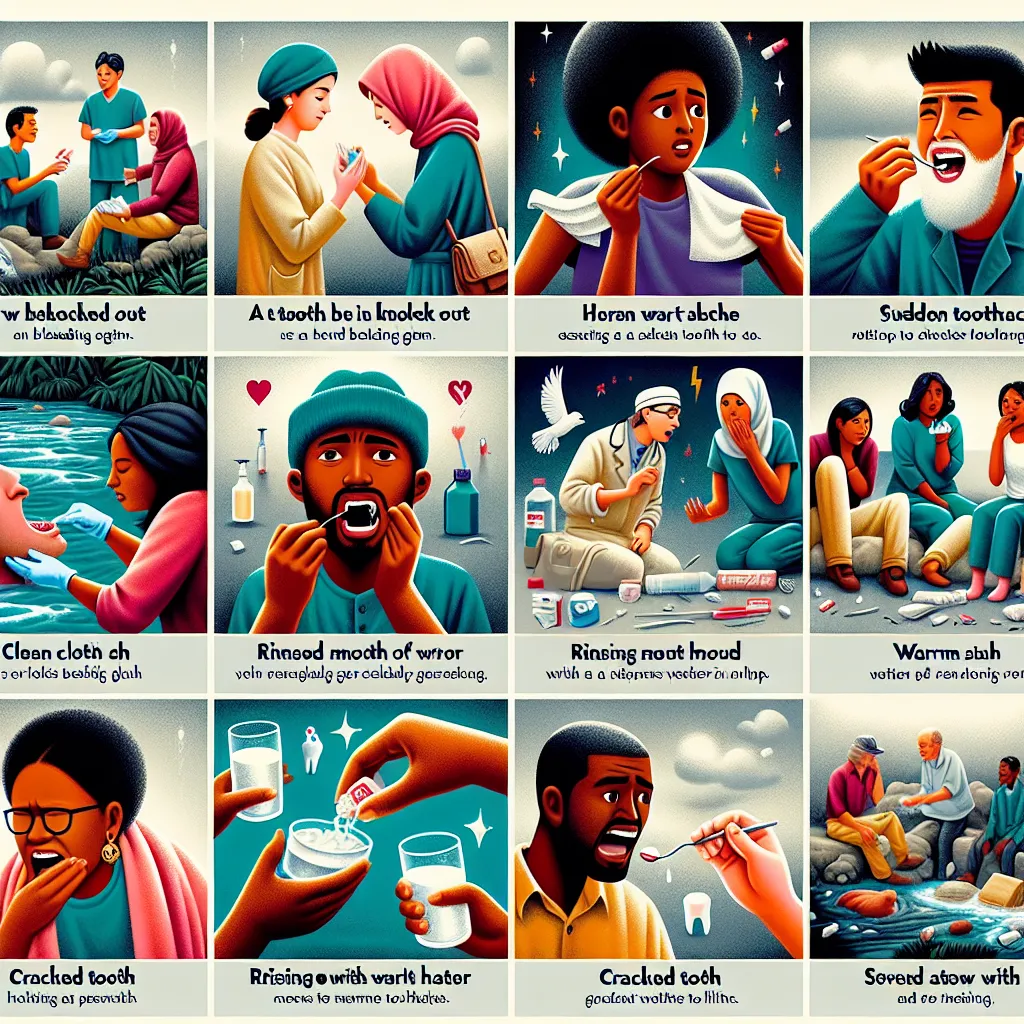
Strategies for Managing Dental Emergencies
Emergency Dentistry
Common Types of Dental Emergencies
When it comes to dental emergencies, it’s crucial to be prepared for the unexpected. From excruciating toothaches to broken teeth, knowing how to handle common types of dental emergencies can make all the difference in preventing further damage and alleviating pain.
1. Knocked-Out Tooth
One of the most common dental emergencies is a knocked-out tooth. If you find yourself in this situation, it’s essential to act quickly. Pick up the tooth by the crown, rinse it gently with water, and try to reinsert it into the socket. If that’s not possible, place it in a container of milk and see your dentist immediately.
2. Severe Toothache
A severe toothache can be debilitating, making it challenging to focus on anything else. Rinse your mouth with warm water, floss to remove any trapped debris, and apply a cold compress to the outside of your mouth to reduce swelling. Make an appointment with your dentist to determine the underlying cause.
3. Broken or Chipped Tooth
Whether due to a fall or biting down on a hard object, a broken or chipped tooth requires immediate attention. Rinse your mouth with warm water, apply gauze to any bleeding areas, and save any broken tooth fragments. Contact your dentist as soon as possible for proper treatment.
4. Lost Filling or Crown
If you lose a filling or crown, it can expose the sensitive inner layers of your tooth, leading to pain and discomfort. While awaiting dental care, you can use over-the-counter dental cement or temporary filling material to cover the area and protect your tooth. Schedule an appointment with your dentist promptly.
5. Abscessed Tooth
An abscessed tooth is a serious condition that requires immediate attention. Symptoms include severe pain, swelling, and drainage of pus. Rinse your mouth with salt water, take over-the-counter pain medication, and see your dentist as soon as possible to prevent the infection from spreading.
First Aid Techniques for Dental Emergencies
Dental emergencies can be daunting, but having the knowledge of basic first aid techniques can make a big difference in providing immediate care before professional help is available.
1. Knocked-Out Tooth
When a tooth gets knocked out, it is crucial to act quickly. Hold the tooth by the crown, not the root, and try to reinsert it into the socket. If that’s not possible, keep it moist by placing it in milk or saliva until you can reach a dentist.
2. Toothache Relief
To alleviate a toothache, rinse your mouth with warm water and gently floss around the affected tooth to remove any trapped debris. Over-the-counter pain medication can help manage the pain until you can see a dentist.
3. Broken or Chipped Tooth
If you fracture a tooth, rinse your mouth with warm water and apply a cold compress to reduce swelling. Save any broken tooth fragments and see a dentist as soon as possible to prevent further damage.
4. Object Stuck Between Teeth
If something gets stuck between your teeth, try to gently remove it with dental floss. Avoid using sharp objects that can damage your gums. If the object remains lodged, seek professional dental help to prevent infection or injury.
5. Lost Filling or Crown
If a filling or crown comes loose, try to reattach it temporarily with dental adhesive or sugar-free gum. Avoid chewing on that side of your mouth and schedule an appointment with your dentist to have it properly fixed.
Preventive Measures to Avoid Dental Emergencies
When it comes to dental emergencies, prevention is always better than cure. By taking simple yet effective steps, you can significantly reduce the risk of experiencing a dental emergency. Let’s explore some preventive measures that can help you avoid the pain and inconvenience of unexpected dental issues.
1. Maintain Good Oral Hygiene
Keeping your teeth and gums clean is essential in preventing dental emergencies. Brushing your teeth at least twice a day, flossing regularly, and using mouthwash can help remove plaque and bacteria that lead to tooth decay and gum disease.
2. Visit Your Dentist Regularly
Scheduling routine dental check-ups is crucial for early detection of any potential dental problems. Your dentist can identify issues like cavities, gum disease, or infections before they escalate into emergencies.
3. Wear Protective Gear
For individuals who actively participate in sports or physical activities, wearing mouthguards can protect your teeth from injuries and trauma. Investing in custom-fitted mouthguards can prevent dental emergencies caused by impact or accidents.
4. Watch Your Diet
Your diet plays a significant role in your oral health. Limit sugary and acidic foods and beverages that can erode tooth enamel and contribute to cavities. Opt for a balanced diet rich in vitamins and minerals to strengthen your teeth and gums.
5. Avoid Bad Habits
Habits like nail-biting, chewing on ice, or using your teeth as tools can result in dental emergencies. Break these habits to prevent chipped, cracked, or broken teeth that may require immediate dental attention.
6. Be Prepared
Lastly, having a dental emergency kit at home or in your car can be beneficial. Include items like sterile gauze, a small container with a lid, and the contact information of your emergency dentist. Being prepared can make a difference in how you handle unexpected dental situations.